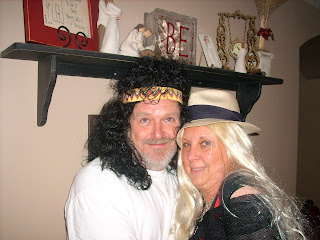Practicing Mindfulness (or, a full mind needs to be emptied every once and a while)
According to an article in Hartford Business Review,
“Mindfulness can Literally Change Your Brain,” mindfulness is a way to, “keep our brains healthy, to support
self-regulation and effective decision-making capabilities, and to protect
ourselves from toxic stress. It can be integrated into one’s religious or
spiritual life, or practiced as a form of secular mental training. When
we take a seat, take a breath, and commit to being mindful, particularly when
we gather with others who are doing the same, we have the potential to be
changed.”
With this in mind, what is mindfulness? Mindfulness is active and clear attention to the present – to the
moment, suspending judgment. Mindfulness is awakening to the present
experience, being fully conscious and engaged in the “task at hand.” How is mindfulness practiced?
First, mindfulness does not mean you need to "om." Mindfulness can take only moments, and meditation may or may not be a part of that centering. In fact, meditation is a type of mindfulness. So - no worries if you only have four sips of coffee to get centered, you can do it.
Mindfulness means fully focusing on the moment. Some natural
ways of being mindful include coloring, playing with a child, putting together
a puzzle, shaving, showering. At these times we are often focused and are able
to allow our minds, in that intense focus, to be clear and purposeful, for a
moment, to be present. This doesn’t mean one has to set aside a ten minute
block of time to practice, but only have times where we are consciously aware
of what we’re doing, rather than our minds being elsewhere.
Some simple ways of practicing include:
1. When you wake, before rising, do a simple body
scan or check in. Starting at your toes and moving up, focusing on one part of
your body at a time. Tighten, the relax. What are you feeling? Any aches? Any
tension, hesitation, apprehension, excitement?
2. Sipping on a cup of tea, coffee, and feeling the
heat, of the cup, the steam rising from the cup, the warmth as it hits the
mouth, goes down the throat, fills the belly.
3. Use all of your senses when you eat. Look at the
color of the grape you are about to eat. Smell the ripeness and freshness of
it. Feel the grape pop in your mouth. Taste the juice as it rolls around your
mouth. Hear your stomach saying thank you as you digest it.
4. Sitting straight in your chair, roll shoulders
forward three times and back three times.
5. At intervals throughout the day take 3 deep
Buddha or Belly breaths, breathing in through the nose, and deep into the
belly, and out through the mouth. Feel that breath.
6. Place the tongue at the top of the mouth, which
then unlocks the jaw, relaxing the jaw, and preventing grinding teeth and
clenching the jaw.
7. Pay attention to your footsteps, how do they
sound on the ground, how your feet are touching the ground, try placing your
feet heel to toe or toe to heel, changing the gait.
8. Use telephone rings, apps, door knocks, as cues
for relaxation.
9. During sleepless or restless sleeping times, our
minds seem to revolve almost like a stuck record, going over and over
something, with no movement forward. Jot concerns down, so they are out of your
mind and on paper.
10. Take the alphabet, and choosing a topic (names,
weather, emotions) find one for each letter.
11. Make friends with the night – get up, deep
breath, walk, quietly, making each step an intentional step.
12. When feeling pain (physical, emotional,
spiritual) doing a “check-in” or scan. Acknowledge the pain, see where it
originates, where the pain is radiating, how your body is reacting to this.
Ride with the pain, implementing any medical directions along with breathing
exercises.
13. STOP – Stop, Take a breath (feel the presence of
breath in your body. Notice the quality of your breathing. Observe thoughts,
emotions, physical sensations present in your body. Proceed; step back into
what you are doing with more awareness and presence. Remember – you have a
choice in how you step back in.
14. If feeling overwhelmed about the future, stop it! Imagine
you have a flashlight in your hand. With that flashlight, shine it in front of
you. How far in front of you can you see, before the light diminishes? Take a
couple of steps forward, does your perspective go further now? Only worry about
what can be seen. One day, one step, one moment at a time gives confidence in
the now, which also brings hope rather than doubt, worry, confusion.
It is wise to take a break from our work, worries, stress,
and come back to the present moment. Rather than staying in the state of
distraction, consciously choose to come back to what’s happening in the here
and now.
As part of my 2016 goals of Hygge and Glean, mindfulness is becoming a go-to during my days and nights. I'm loving the opportunity to center myself.
























